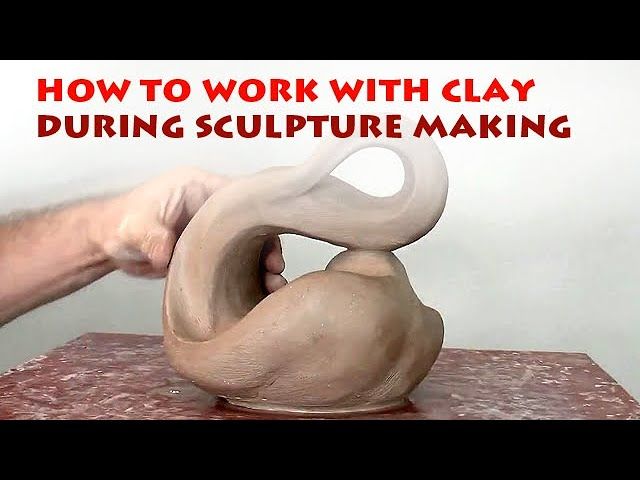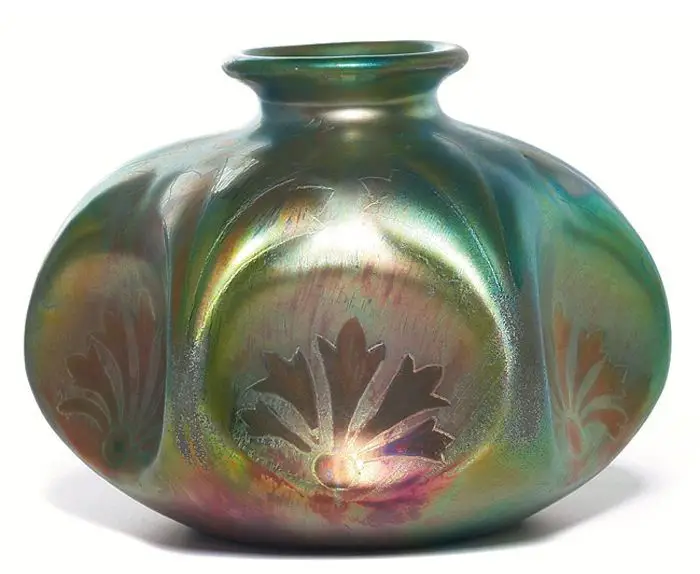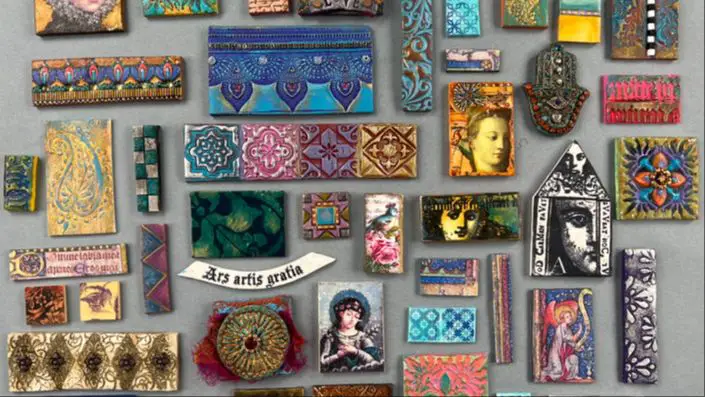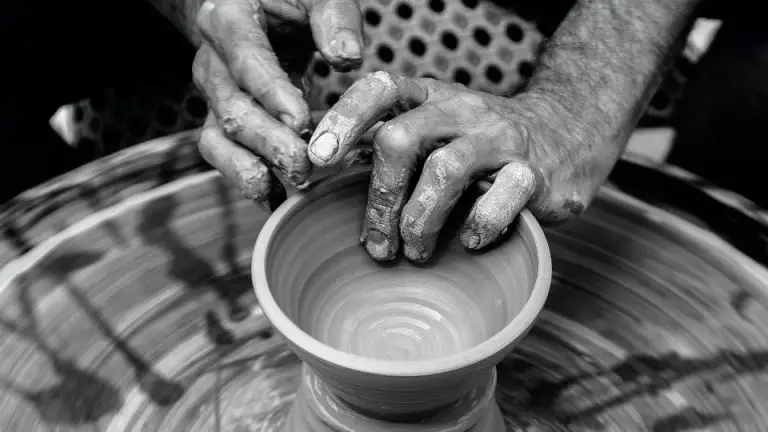What Is An Alternative To Modeling Clay?
Modeling clay is a type of malleable clay that holds its shape while drying and is used for arts and crafts projects. It does not harden when left to dry in the air and allows for continuous reworking and shaping. Modeling clay is popular with children and adults for sculpting and molding figures, jewelry, pots, and more. However, traditional modeling clay can be messy, expensive, or contain chemicals some people want to avoid. Fortunately, there are many alternatives to modeling clay that provide a similar tactile sculpting experience using household items.
This article will look at various alternatives to store-bought modeling clay, from homemade salt dough clay to kinetic sand. We’ll cover the pros and cons of each alternative and compare key characteristics like texture, dry time, messiness, and cost. Whether you want to avoid certain ingredients in normal modeling clay or simply don’t want to buy specialty materials, read on to discover kid-friendly, all-natural substitutes using pantry staples.
Play-Doh
Play-Doh was originally invented in the 1930s by Noah McVicker as a wallpaper cleaner putty. However, after a classroom of children began using it as a modeling clay, McVicker’s nephew Joe McVicker recognized its potential as a toy. Joe McVicker founded the Rainbow Crafts Company in the 1950s to manufacture Play-Doh, and by the 1960s it had become one of the most popular toys on the market.
Play-Doh is made from wheat flour, water, salt, borax, and mineral oil. It has a soft, warm, and malleable texture, much like traditional modeling clay. The salt gives Play-Doh a unique grainy feel, while the oils allow it to be smoothly reshaped without sticking or cracking.
As an alternative to modeling clay, Play-Doh offers the creative satisfaction of sculpting without the need to bake or fire pieces. It’s non-toxic and inexpensive. However, pieces made from Play-Doh are fragile and impermanent. The material dries out over time and is meant to be remolded versus kept as a lasting sculpture. Play-Doh comes in a limited range of colors, requiring mixing to achieve additional shades.
Homemade Salt Clay
Homemade salt clay, also called salt dough, is an easy DIY clay that you can make using just a few simple ingredients – flour, salt, and water. Here is a basic recipe for salt clay:
Salt Clay Recipe:
Mix together:
- 2 cups flour
- 1 cup salt
- 1 cup water
Stir until it forms an elastic dough. Knead for a few minutes. The salt clay is now ready to use for sculpting and creating shapes and figures.
Salt clay offers many benefits. As it’s homemade, you can customize the ingredients – adding food coloring or essential oils for scent. It’s extremely budget friendly, with ingredients most people already have on hand. Kids especially enjoy working with the soft, moldable texture.
However, salt clay also has some drawbacks. The models made with salt clay are quite delicate before baking. Additionally, salt clay is not very durable after baking either, so the projects don’t last as long as those made from ceramic or polymer clay.
Paper Mache
Paper mache is a popular craft material often used by children that can serve as an alternative to modeling clay. It’s made by mixing shredded paper with a paste made of flour and water. Here is a simple paper mache recipe:
You’ll need shredded paper, flour, water, a bowl for mixing, and a sculpting base or armature. Mix 1 part flour with 2 parts water until smooth. Dip strips of paper in the paste until saturated. Remove excess paste by running the strips between your fingers. Apply the damp strips over your sculpting base, smoothing out bumps. Apply 4-5 layers, allowing to dry completely between layers.
Paper mache is lightweight and inexpensive, making it a great choice for creating large, lightweight sculptures. It’s also fun for kids to work with. However, it can be messy during the process. Proper cleanup is important. The final sculptures are also fragile and not very durable. Still, paper mache allows for creativity without the expense of clay.
Air Dry Clay
Air dry clay is a commercially available modeling material that does not require baking or firing to harden. It air dries to a finish that is durable yet still slightly flexible.
Air dry clay typically comes in bright colors like red, blue, and yellow. It has a smooth, doughy texture similar to traditional clay, but remains workable until it dries. Major brands include Crayola Model Magic and Activ-Clay.
The main benefit of air dry clay is convenience. Since it does not require baking, air dry clay is great for kids’ crafts and modeling at home. Pieces dry overnight or within a few days, making air dry clay ideal for spontaneous creativity.
However, air dry clay has a relatively short working time before it begins to dry and harden. The clay can get sticky or difficult to manipulate if left uncovered for too long while working on a project. Air dry clay is also less sturdy than true ceramic clays.
Overall, air dry clay offers a quick and easy alternative to traditional clays. While the results may not be as durable, air dry clays allow modeling and sculpting without the effort of firing pieces in a kiln. It’s an accessible option for casual crafting and children’s projects.
Kinetic Sand
Kinetic sand is made from sand and silicone oil. The silicone oil coats each grain of sand, allowing the sand to be molded into shapes that retain their form. Kinetic sand provides sensory stimulation through its soft, squeezable texture. Since it molds easily without sticking or drying out, kinetic sand enables open-ended creative play.
A major benefit of kinetic sand is that it facilitates sensory exploration and fine motor development. The satisfying tactile qualities make kinetic sand calming and engaging for kids and adults alike. Kinetic sand is also reusable, so it promotes creativity and imaginative play.
On the downside, kinetic sand can leave dust and stains. The sand can get ground into carpets, furniture, and clothing. Proper cleanup is important after playing with kinetic sand. Some kids may try to eat the sand, so supervision is advised. Kinetic sand may also irritate sensitive skin for some users.
Bread Dough
Bread dough is one of the easiest alternatives to modeling clay that you can make at home. All it takes is some basic ingredients like flour, salt, yeast and water. Here are some simple bread dough recipes you can use for modeling:
Basic Bread Dough Recipe:
2 cups flour
1 cup warm water
1 teaspoon yeast
1/2 teaspoon salt
Mix the ingredients together until a shaggy dough forms. Knead for 5-10 minutes until smooth and elastic. The dough is now ready for modeling!
No-Knead Bread Dough Recipe:
3 cups flour
1 1/4 cup warm water
1/4 teaspoon yeast
1 teaspoon salt
Mix ingredients together and allow to rest, covered, for 12-24 hours. The dough can then be used for modeling without kneading.
Bread dough makes an inexpensive, edible and non-toxic alternative to modeling clay. Since it’s food, kids can safely play with it. Once they are done modeling, the sculptures can be baked into bread. Bread dough also doesn’t dry out as quickly as clay.
The main drawback is that bread dough is perishable. It needs to be kept refrigerated and will go bad within a few days. So it doesn’t store as well as clay. The finished sculptures also need to be baked relatively soon before the dough over-proofs. The dough becomes sticky as it warms up during play, which can frustrate some kids.
Beeswax
Beeswax is a flexible natural material that can be used for modeling. It has some properties that make it a decent alternative to clay.
One benefit of beeswax is that it is very pliable and easy to shape at room temperature. It softens quickly when warmed by hand, allowing it to be molded into custom creations. Beeswax also takes color well, so it can be dyed to any desired hue.
Additionally, beeswax has a lovely honey aroma. The scent can make modeling with it a more enjoyable and relaxing experience.
There are some downsides to keep in mind if using beeswax for modeling. The main drawback is that beeswax melts at relatively low temperatures. Any sculptures or shapes made from beeswax could become deformed or destroyed if exposed to high heat.
Beeswax can be somewhat sticky as well. Fingerprints and dust may cling to beeswax creations more easily than with some other modeling materials.
Overall, beeswax is a natural, non-toxic material with some modeling capabilities. With proper care, it can be molded into various shapes and designs.
Comparison of Clay Alternatives
When comparing the different modeling clay alternatives, there are a few key factors to consider:
Texture – Some alternatives like play-doh and salt dough have a smooth, clay-like texture. Others like kinetic sand and bread dough have a grainier, sandier feel. Paper mache can vary in texture depending on techniques.
Pliability – Play-doh, salt dough, and air dry clay hold their shape well when molded but don’t dry rock hard. Kinetic sand and bread dough are moldable but less shape-retaining. Paper mache is initially very moldable when wet but stiffens as it dries.
Durability – Air dry clay and paper mache creations are very durable once fully dried/cured. Play-doh, salt dough, and bread dough don’t fully harden and are less durable over time. Beeswax can be brittle if thinly spread.
Messiness – Play-doh, kinetic sand, bread dough, and beeswax can be messy, while air dry clay and paper mache are cleaner to work with.
Cost – Many alternatives like play-doh, salt dough, paper mache and kinetic sand can be very affordable or made from household items. Pre-made air dry clay and beeswax tend to be more expensive.
In general, play-doh, salt dough and kinetic sand work well for freeform sculpting and molding. Air dry clay is great for detailed modeling and durable finished pieces. Paper mache excels at lightweight crafted shapes. Bread dough can allow edible creations. Beeswax is nice for small detailed models.
Consider the final use, desired texture, messiness, cost and durability needs when deciding which alternative is best for your modeling clay substitute.
Conclusion
In summary, there are several great alternatives to modeling clay that allow kids and adults to be creative. Play-Doh and homemade salt clay are classic options that are easy to make at home. For sculpting more detailed projects, air dry clay and paper mache create durable results. Kinetic sand provides a unique sensory experience. And for no-bake sculptures, bread dough and beeswax can be shaped and molded endlessly.
When choosing an alternative, consider the age and skills of the user. Play-Doh and salt clay are great for young kids, while older kids and adults may enjoy the versatility of air dry clay. Those wanting to avoid messes may prefer kinetic sand or beeswax. Cost, drying time, and type of projects are other factors that can help determine the best material.
The wonderful thing about art is that we can get creative with all sorts of everyday items and materials. So be adventurous, try out new mediums, and most importantly, have fun being creative!






